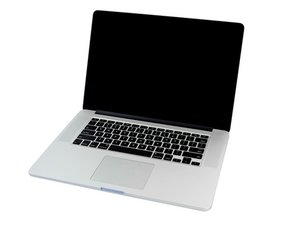by Peter_Kelu
Normal hole with screw.
My washer fix with screw.
It’s not an easy fix, but I had the bits I needed and the tools, so I did it. Originally each screw hole is recessed then drilled (as you can see above), so that the screw head can squeeze the case down when tightened, but occasionally something happens, perhaps wear and tear, or could be when you drop your laptop like I did mine, when the sudden shock pulls the screw through the hole tearing off the recessed edge that it would normally tighten against.
Screw showing side profile.
Normal hole with screw removed.
If you can get your hands on a nice perfectly sized non-rusting washer, with an internal diameter (ID) of 1.9-2.0mm and an outer diameter (OD) of 3.4mm, you probably just need to thin it out with some fine sandpaper, and you’re good to go, with minimal tools.
Alternatively, here’s how I fixed it. You’ll need some fine tools and skills, the kind jewellers use. I took a 1.5mm thick piece of titanium (Ti), only about 1.5cm x 1.5cm that I had laying around, cut a 3.5mm strip off it with a jewellers hacksaw, drilled a 1.5mm hole at one end, leaving me the long end to hold it by, and filed inside that hole carefully with a round diamond needle file to bring it up to the 1.9mm ID (testing often to see when I could drop the screw through up to its head). I rounded the two corners with a file, and cut it off at 3.5mm. Holding the tiny washer, I rounded those last two corners, and continued to file around it, making sure the drill hole remained centred, and bringing the whole washer down to 3.4mm OD (I used vernier calipers to measure that).
(Forgot to take a photo at this point)
I then laid it flat on the file and took off about 1mm thickness, bringing it down to 0.4mm, polishing it with a fine polishing file on both sides. It looked so good, like a commercial washer, only with very specific dimensions, and made of Ti, which is kind of rare to find. The nice thing about Ti is that it’s in the same element group as Aluminium, which the case is made of, so it’s quite similar.
Punched hole where the screw would fall through.
The washer fitted below the surface.
The screw left its mark along the centreline when tightened.
I then took my half round diamond needle file, and chamfered the punched hole on the case, to provide a new ledge for my washer to catch on. I was very careful not to widen the hole at all, only to chamfer the top edge 45º. I then put the screw through the washer, inserted it through the chamfered hole, and proceeded to screw it down to the computer, tightening as much as usual, and it worked like a charm.
Screw fitted but not tightened.
Screw fitted tightly and not pulling through.
Now I can even remove the screw and the Ti washer has lodged itself nicely in that hole, appearing as though it’s part of the case. You cannot tell by looking at it that anything has been done, and even with the screw in it, you can run your fingers across the screw, and it barely feels raised (see the photos above). The thickness of the washer was important to keep the tightened screw flush, as I achieved, but also because the screws aren’t overly long, you wouldn’t want to lose the bite of the thread, or that may tear out, and then you’ll really have something to fix. This way I’ve only sacrificed a fraction of a millimetre, which is nothing.
I might have been able to do all this with standard washers, but I made my own instead, with only a little patience and some jewellery tools. It took me a couple of hours, as I was making it up as I went, and I don’t have a jeweller’s bench, which would have sped things up tremendously, having something firm to saw against (not in your hand), and not worrying about filings getting into your carpet or drilling your nice antique desk.


 2
2  1
1 
 971
971 








2条评论
Add one image of bottom of your laptop
由 Amily Grey 完成的
Added picture...
由 David Addison 完成的